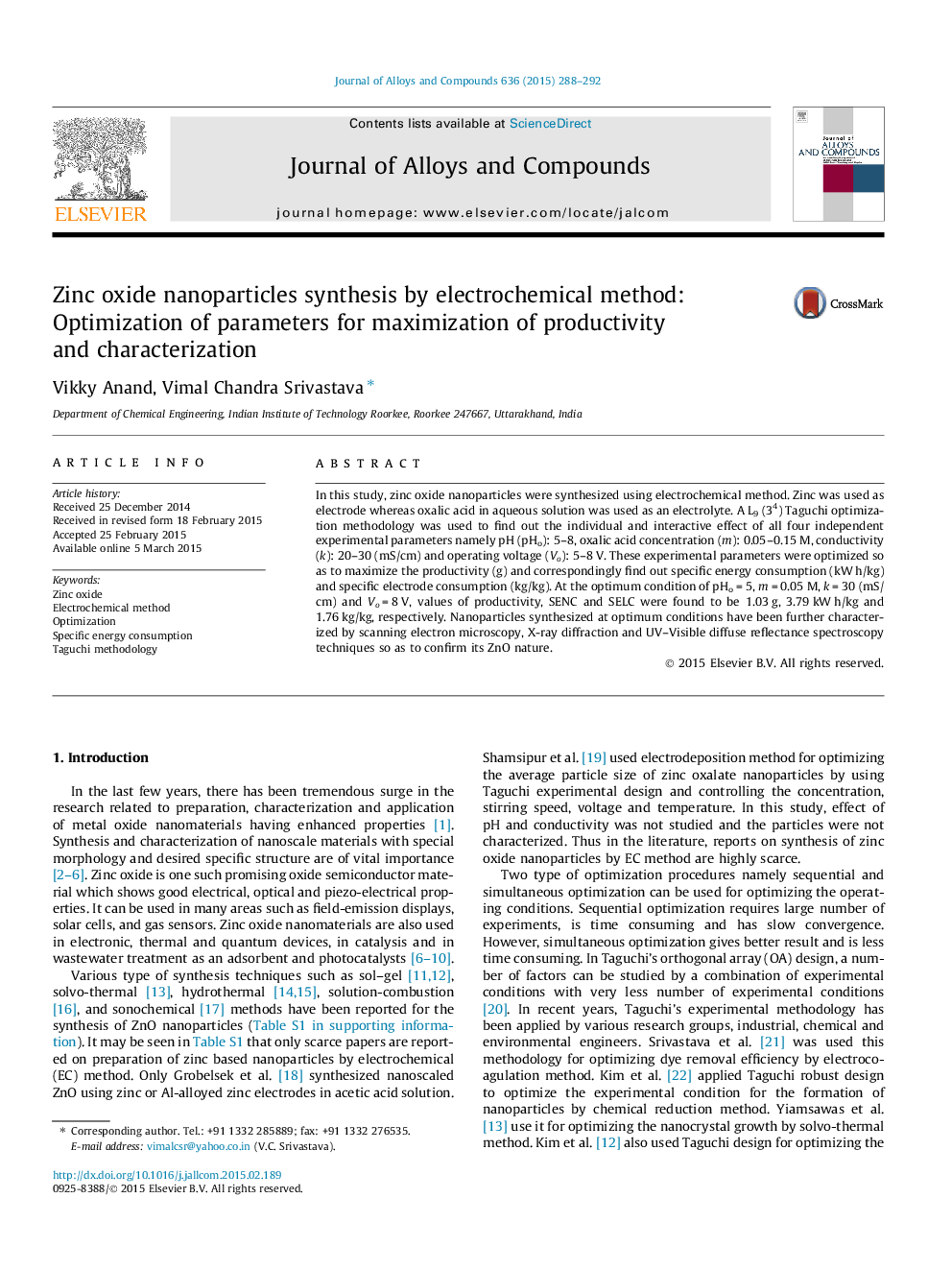| Article ID | Journal | Published Year | Pages | File Type |
|---|---|---|---|---|
| 1609098 | Journal of Alloys and Compounds | 2015 | 5 Pages |
•Preparation of zinc oxide nanoparticles by electrochemical method.•Zinc electrode used as cathode and anode and oxalic acid as an electrolyte.•Study of the effect of pH, electrolyte concentration, conductivity and operating voltage.•Optimization of productivity by Taguchi methodology.•Nanoparticles characterized by XRD, SEM, UV-DRS techniques.
In this study, zinc oxide nanoparticles were synthesized using electrochemical method. Zinc was used as electrode whereas oxalic acid in aqueous solution was used as an electrolyte. A L9 (34) Taguchi optimization methodology was used to find out the individual and interactive effect of all four independent experimental parameters namely pH (pHo): 5–8, oxalic acid concentration (m): 0.05–0.15 M, conductivity (k): 20–30 (mS/cm) and operating voltage (Vo): 5–8 V. These experimental parameters were optimized so as to maximize the productivity (g) and correspondingly find out specific energy consumption (kW h/kg) and specific electrode consumption (kg/kg). At the optimum condition of pHo = 5, m = 0.05 M, k = 30 (mS/cm) and Vo = 8 V, values of productivity, SENC and SELC were found to be 1.03 g, 3.79 kW h/kg and 1.76 kg/kg, respectively. Nanoparticles synthesized at optimum conditions have been further characterized by scanning electron microscopy, X-ray diffraction and UV–Visible diffuse reflectance spectroscopy techniques so as to confirm its ZnO nature.
Graphical abstractFigure optionsDownload full-size imageDownload as PowerPoint slide
